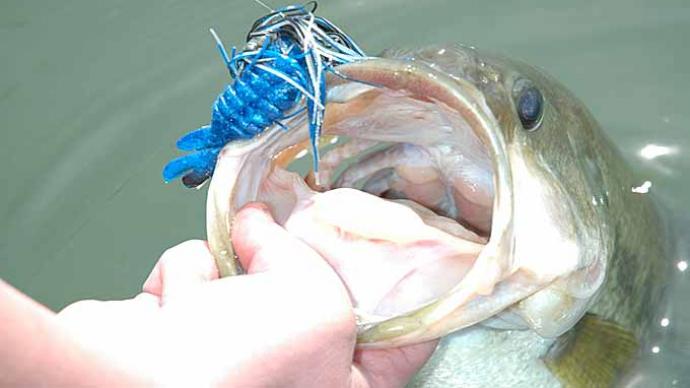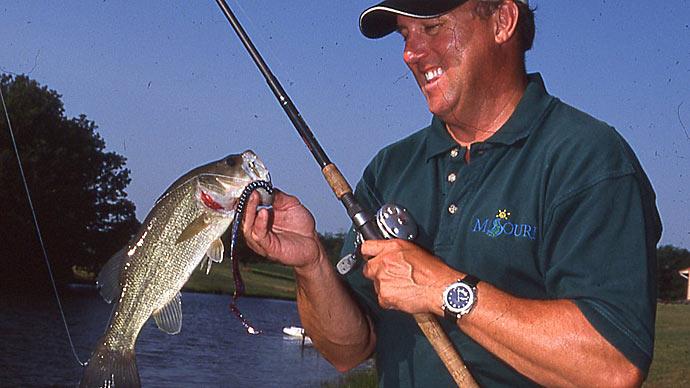
I had been fishing for three hours under the hot August sun with only one fish to account for and numerous follows. As I quickly reeled in the "rat," I was throwing to select another area to cast to, and out of nowhere, a bass hit right at the boat! Immediately I realized I had been fishing my lure with a lazy day-type retrieve, slow and methodical with an occasional pause. For the next hour, I caught and released five more fish. Each had taken my lure on a high-speed retrieve, my lure running across the surface at the same speed one might fish a buzzbait. Maybe faster! I realized then that I had established a pattern within a pattern.
With the bright sunshine and the presence of bait, I knew the bass were way back in the thick stuff. Pattern one. Discovering the bass wanted a fast retrieve was the pattern within. To complicate matters a little more, I experimented and found the bass preferred a chartreuse "rat," further fine-tuning the pattern.
Another time a friend and I were fishing the tops of willow bushes in seven feet of water with the jig-n-pig. When we switched from a pork trailer to a plastic crawfish trailer, our catch rate increased substantially. We also switched from all-black to black and chartreuse, further increasing our catch. We also realized that removing the glass rattle inserts we used added to our success.
These illustrations are just two examples of what establishing a pattern means and how making (sometimes subtle) changes to your presentation can lead to success!
The most important thing one can do to increase success with bass fishing is to understand your quarry. I cannot stress the importance of this enough. To establish a pattern, you must understand how a bass lives in its environment. Knowing where the bass can be found at any given time or place is something you must develop. When a professional bass angler fishes in a tournament, they may be armed with several patterns, backup plans if you will. Always go fishing with a plan in mind. Think about the areas you plan to fish, why you think fish may be there, and the best way to catch them.
When you do catch a fish, try to be alert to any clues a bass may give you. Did it hit on a fast or slow retrieve? Was it deep or shallow? Were you using slim or bulky lures? Were you fishing rocks, wood, weeds, or some other form of cover or structure? Are the fish bumping at your bait or inhaling it? Pay attention to every fish you catch, and ask yourself, "Why did he hit it?"
A bass hooked deep indicates that the bass "really liked what it saw." When fish swipe at your lure or bump it, that indicates a change is needed, be it color, retrieve speed, lure size, or something else. Experiment to find out what it is. Remember that every fish you catch can reveal clues on how to catch another.
After establishing a pattern, realize that when the action slows down in the area you were fishing, you can search for more areas that would fill the same criteria. Say, for instance, that you are fishing an area with a crankbait in 10 feet of water. There is a weedline present, and stumps are scattered about. You notice that the fish you are catching all seem to be suspended right at the edge of the weedline, where the bottom drops off from 10 - 12 feet of water. If you can locate similar areas on the water you are fishing, you can often repeat your successful pattern miles from where you first established it!
This technique is the backbone of "running and gunning." Finding areas with similar features and fishing them with established patterns could lead to success all day long! When the action slows in one spot, find another with details that match your initial spot. You can likely pick up where you left off at a new "greener" area.
Remember that the pattern you may have found can change daily, sometimes hourly, and you need to adjust your fishing techniques accordingly. Watch the weather and water conditions, and pay attention to every fish you catch. They're talking to you!




